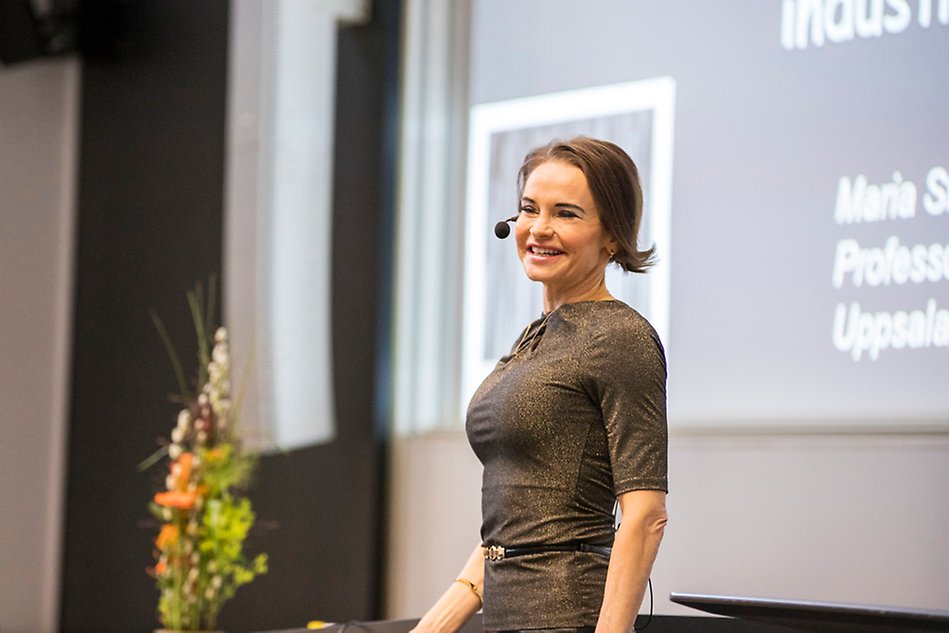A sustainable future with nanotechnology
Maria Strømme, Professor of Nanotechnology at Uppsala University, gave an inspiring lecture at Halmstad University on October 16 about the endless possibilities with nanotechnology. ”Whatever the question – nanotechnology is the answer!”
”To handle a demographic shift with an aging population, there is an ’urgent’ need to create materials to keep us young. For exempel, material that can replace damaged tissue.”
Maria Strømme, Professor of Nanotechnology

Students, staff and interested members of the public had gathered to listen to entrepreneur and professor Maria Strømme. She gave examples from many different areas where nanotechnology can improve our lives and the environment.
”With nanotechnology we can determine what properties a material should have. The technology creates completely unique opportunities for sustainable development in all areas where we use materials”, said Maria Strømme.
Solar energy, smart clothing and better cancer therapies
Nanotechnology can lead to new solar cell technology with a dramatically improved efficiency, stretched batteries that can be inserted into clothes for cooling purposes and low maintenance infrastructure for the increased urbanisation. The technology also has the potential to bring us better cancer therapies and replace damaged human tissue.
”To handle a demographic shift with an aging population, there is an urgent need to create materials to keep us young. For exempel, material that can replace damaged tissue”, said Maria Strømme.
Replace plastics with degradable materials
Many of the nanotechnology solutions that Maria Strømme talked about still have several years of research and development before they can become a reality. But there is one area where nanotechnology can make a difference right now, according to Maria Strømme, and that is smart packaging. In just one week, from bottled water alone, the US produces enough discarded bottles to circle the planet five times.
”We have created islands of plastics in our oceans. We need to clean up and replace plastics with degradable materials. A sustainable solution may be found in nano cellulose”, said Maria Strømme.
Text: Louise Wandel
Photo: Rebecca Staver

